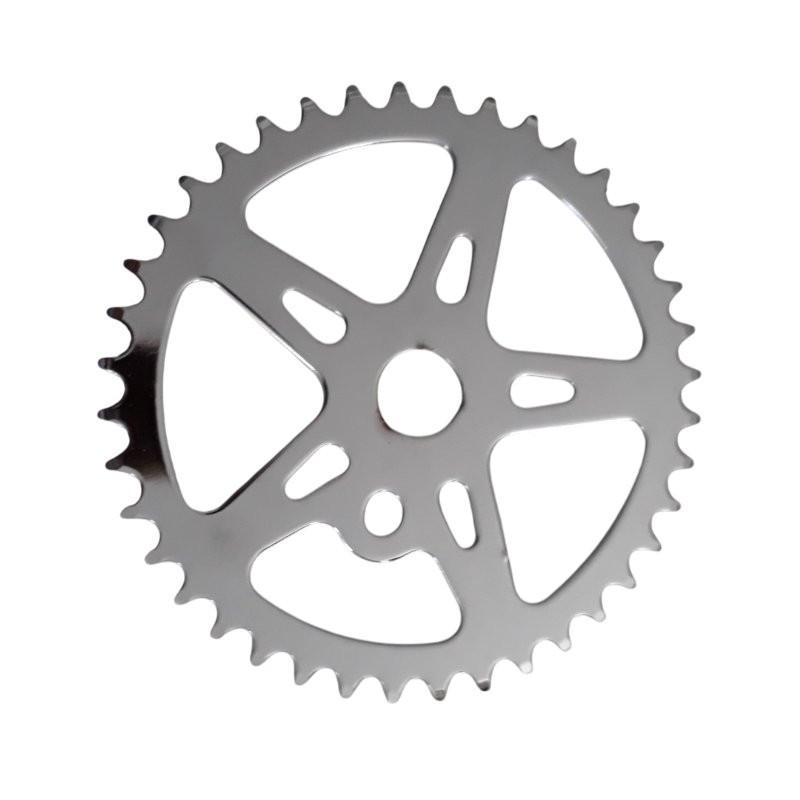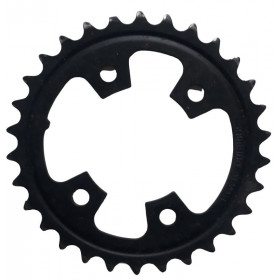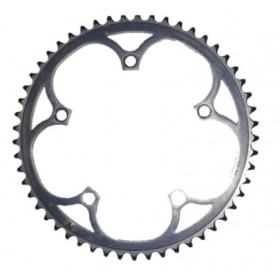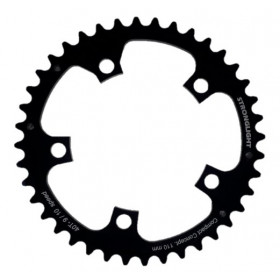 zoom_in
zoom_in
BMX chainring one-piece crankset
- 5 Items
- New
€8.99 VAT included
BMX chainring for one-piece crankset: features and specificities
The BMX chainring plays a central role in the bike’s transmission system. It connects the crank arms to the chain, directly affecting the gear ratio, responsiveness, and versatility of your ride. When dealing with a one-piece crankset, there are specific technical aspects to consider. Here’s everything you need to know to choose the right chainring for this type of crank, commonly found on older or entry-level BMX bikes.
What is a one-piece crankset ?
A one-piece crankset—also known as a one-piece crank—is a single forged steel rod bent to form both crank arms and the spindle. It’s typically paired with American bottom brackets (American BB), which have a wider shell and a simple design.
This setup is still used on some freestyle BMX bikes, kids’ models, or vintage rides. It’s known for being durable, affordable, and easy to maintain, but it requires specific components, especially when it comes to the chainring.
Key features of a BMX chainring for a one-piece crank
1. Mounting type
The chainring attaches directly to the right crank arm, usually with a bolt-on system or clamp mount. Unlike square-taper or three-piece cranksets, there’s no spider with multiple arms. That means you need a chainring specifically designed for one-piece cranks, often made of steel or reinforced aluminum.
2. Number of teeth
BMX chainrings for one-piece cranksets typically come with 36 to 44 teeth, depending on riding style:
-
36–39 teeth: Ideal for freestyle, street, or park riding, where acceleration and control are more important than top speed.
-
40–44 teeth: Better suited for BMX racing or more speed-oriented setups.
The number of teeth should match your rear cog to maintain a balanced gear ratio for your riding discipline.
3. Material
Most chainrings for one-piece cranks are made of steel (strong and budget-friendly) or CNC-machined aluminum (lighter but pricier). Steel is often preferred for its durability, especially for beginner riders or aggressive freestyle use.
4. Tooth profile and thickness
The teeth need to be wide and sturdy to fit a BMX chain, which is often thicker than a standard bike chain. A quality tooth profile ensures smooth chain engagement and reduces the risk of derailments, even during tricks and jumps.
Why use a chainring made for a one-piece crank?
Using an incompatible chainring can cause misalignment, poor chain tracking, or even damage to the crank. A proper one-piece crank chainring ensures:
-
Smooth pedaling and chain engagement
-
Increased durability under stress
-
Efficient power transfer
-
Stability and reliability in demanding conditions
Maintenance tips
Regularly clean your BMX chainring, check for tooth wear, and ensure all bolts are tight. This keeps the entire drivetrain—chainring, chain, cog, and crankset—in optimal condition and extends its lifespan.
Final thoughts
Choosing the right BMX chainring for a one-piece crankset is essential for performance, durability, and ride quality. Whether you're just getting into BMX or riding a retro build, this component deserves attention. Always check chain compatibility and select the right tooth count for your style of riding to get the best out of your setup.





